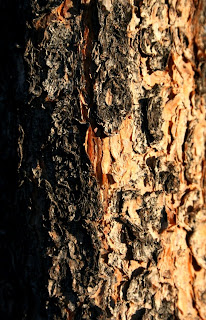One who grew up in such a far-away place as kansas city, and has relied on the public education system for their brains would likely deem anything green in the winter or prickly as a PINE TREE, a christmas tree, or the A-student may even whip out the term evergreen or conifer.
One who grew up amongst the trees- like many folks here in the west- or pursued an alternative education involving anything out here would be more likely to call the tree one of three things:
One who grew up amongst the trees- like many folks here in the west- or pursued an alternative education involving anything out here would be more likely to call the tree one of three things:
A PINE, A SPRUCE, or A FIR
 SO it has become time for me to share the knowledge that I have gained outside of the classroom. HOW DO YOU TELL THE DIFFERENCE!?
SO it has become time for me to share the knowledge that I have gained outside of the classroom. HOW DO YOU TELL THE DIFFERENCE!?A pine is the only one with fascicle (clustered) needles (where two or more are grown from a common base), and the living fir and spruce are told easily by the shape of their needles, which grow individually off of the branch.
A fir has flat needles, and a spruce has sharper ones that seem to have something of a prismatic shape to 'em- they have multiple edges and are "spindly" when you roll one between two fingers.
Bob, here at shadowcliff, has given me an incredible simple guide. He told me to remember:
"FLAT FIR, SPINDLY SPRUCE; Everything else is a pine..."
As this may hold true in Rocky Mountain National Park, I immediately think of all of the junipers and such back home- the "everything else" rule would not apply here.
(LEFT) branch and Spindly needles of SPRUCE tree..
The shapes and colors of the tree are very different, too!...
A fir is the only one of the three that may have a smooth, almost silver-looking bark on it. There are many older trees that lack the silver look to them, but most seem to display the many horizontal bands of broken, bubbly bark. A spruce can have grey bark,
 but many of the older trees can be more of a red or pink. Bark grows in a shaggy coat formed by many individual hunks and pieces that seem to orient themselves in no way but to lay flat.
but many of the older trees can be more of a red or pink. Bark grows in a shaggy coat formed by many individual hunks and pieces that seem to orient themselves in no way but to lay flat.A pine tree's bark often appears orange and is also shaggy-lookin (at least compared to the "skin-tight" paper that is wrapped around the fir)

Pine bark (above), Spruce (below) and Fir(bottom); Lodgepole cone (above right)


... Its hunks and pieces grow longer and are set vertically on the tree. Though the ponderosa pine is also vulnerable, the more common Lodgepole is the only one here that is really harmed by the Mountain Pine beetles.
Lodgepoles are the taller, skinnier ones that seem to taper off to a sharp point.
Pines, spuces and firs all have similar cones, though the lodgepole's cone seems to have much thicker, woodier leaves on it. The Spruce and fir have smaller cones that have a thinner, more brittle leaf.
 The Squirrels certainly enjoy the immature cones that fall from the spruces! All are evergreens, all are conifers and all are in the pine family. COOL!
The Squirrels certainly enjoy the immature cones that fall from the spruces! All are evergreens, all are conifers and all are in the pine family. COOL!

No comments:
Post a Comment